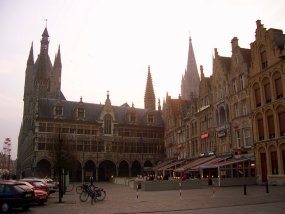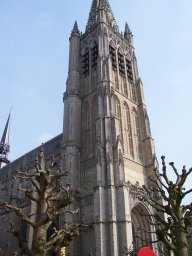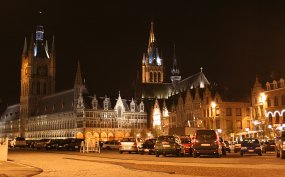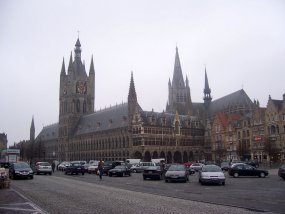
WWII: Maginot Line | Normandy | V-Weapon Sites | Arnhem
Further afield: Crete
| Home Tracing Military Ancestors Travel Advice CWGC Cemeteries Iron Harvest News Book Reviews Glossary Links Contact Me Ypres:
 
|
Core Location 2 – Cloth Hall, Ieper
Directions – In approaching Ieper from the east, take the N38 dual carriageway from Poperinghe and follow directions for Ieper. You’ll exit the N38 just before you reach the town and, after crossing a railway line, continue straight ahead over both mini-roundabouts on the outskirts of the town. After a few minutes you’ll reach the Grote Markt (Grand Place during the First World War), presided over by the massive clock tower of the Cloth Hall. Use the car park in the centre of the square. Practical Information – The Cloth Hall is a great place to stop late on the first afternoon of a two-night stay in Ieper. As well as housing the Regional Visitor’s Centre, the "In Flanders Fields’ Museum" occupies the first floor. It provides a fairly comprehensive and compelling overview of the Salient and the soldiers who fought there. There are also regular exhibitions examining particular aspects of the fighting – a recent one dealt with the way the war changed the landscape of Flanders and looked at some of the recent archaeological excavations that have unearthed First World War trenches, dugouts and, sometimes, their former occupants. A word of warning – the museum is almost a compulsory stop for British school parties, which can be noisy. Come early or late to avoid the crowds.
Historical Notes – The original Cloth Hall was completed in 1260 and extended in the 17th Century. Architecturally amongst the most magnificent non-religious buildings of the Middle Ages, it proclaimed to Europe the importance of the town in the manufacture and export of cloth. In fact Ypres was so synonymous with the trade that a special pattern of cloth from the town was known in French as "d'Ypres" or "diaper" in English. During the First World War German guns targeted the Cloth Hall and the buildings around it and by 1918 it was little more than a pile of rubble with just the great bell tower retaining any recognisable form. The task of rebuilding after the war was a massive one and it was not until 1962 that the new Cloth Hall was completed – identical in almost every respect to the one that existed prior to 1914 and a tremendous tribute in stone and mortar to the industry and dedication of the Belgian people. Eyewitness Account – In his book, “Passchendaele and the Somme”, Hugh Quigley remembers spending a night amongst the ruins of the Cloth Hall. When he awoke he: "...explored a little: just inside the arch hung a delicately-wrought iron lamp, quite intact, with some fragments of glass still in it and, below, a pair of wooden wheels belonging to an old type of gun. Just beyond lay the ruins of the church, a mere blur of a building. The Cloth Hall seemed to have been so battered that not a single sculptured figure, or shadow of a figure, remained, except one gargoyle at the end, which leered down as jauntily as ever." Extract taken from Flanders Then & Now, The Ypres Salient and Passchendaele by John Giles, Battle of Britain Prints International Ltd 1995. |
||||||||




